

|
|
|


|
|
1/12 Scale Nitro Rally/Touring Car:
Kyosho / Graupner - Minitz 06 - Mini Cooper Racing Version - 2368 / 4955
|
Released by Kyosho in 1979, the Mini Cooper Racer - # 2368 - was distributed in Europe by Graupner - # 4955 - and is based on the on-road version of the Minitz 06 Series.
The model came factory assembled, with an unpainted clear polycarbonate Bodyshell, and pre-installed .06 Engine with Heatsink and Muffler that can be started by turning the rear wheels by hand. A Radio System and Fuel to be purchased separately.
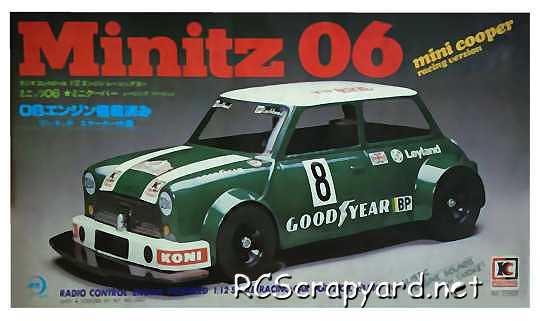
The 2WD model is based on an injection molded alloy and polycarbonate chassis, with ball link tie rods, an open die-cast alloy gearbox, sponge tires and bushings.








|
|
|

★ Kyosho / Graupner Minitz 06 - Mini Cooper Racing - 4955 ★
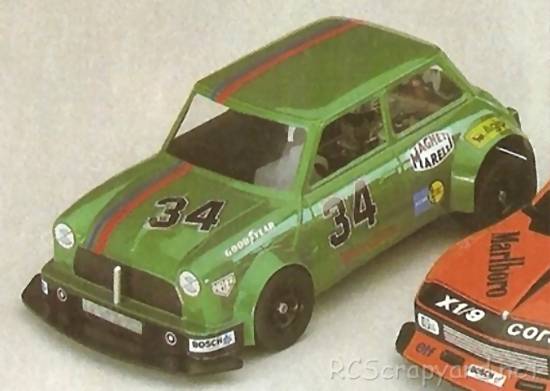
★ Kyosho Minitz 06 - Mini Cooper Racing - 2368 ★
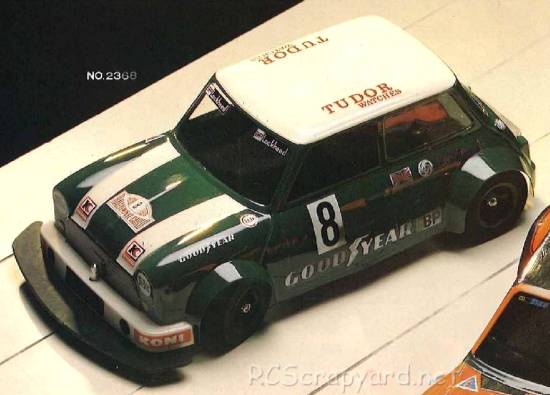
★ Kyosho Minitz 06 - Mini Cooper Racing - 2368 ★
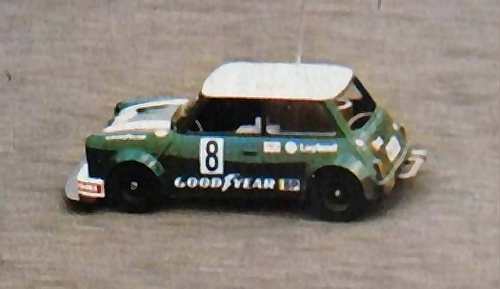
★ Kyosho Minitz 06 - Mini Cooper Chassis ★
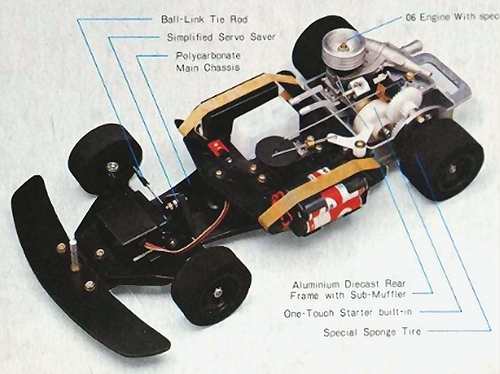
★ Kyosho Minitz 06 - Mini Cooper Chassis ★
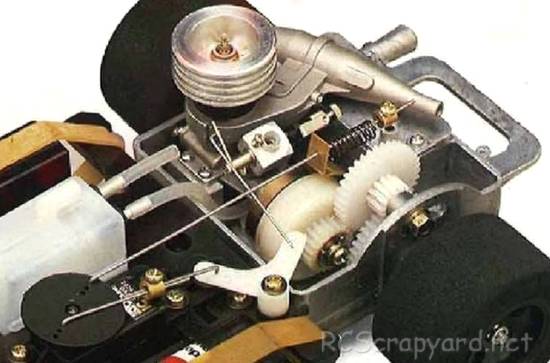
★ Kyosho Minitz 06 - Mini Cooper Chassis ★
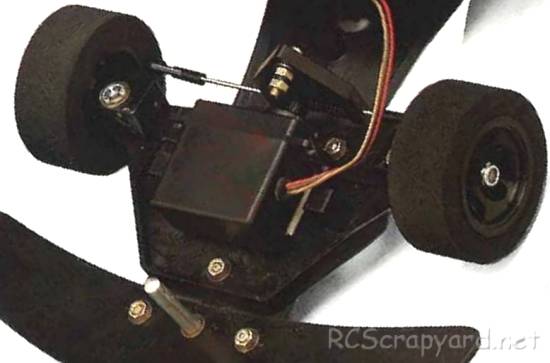
★ Kyosho Minitz 06 - Mini Cooper Chassis ★
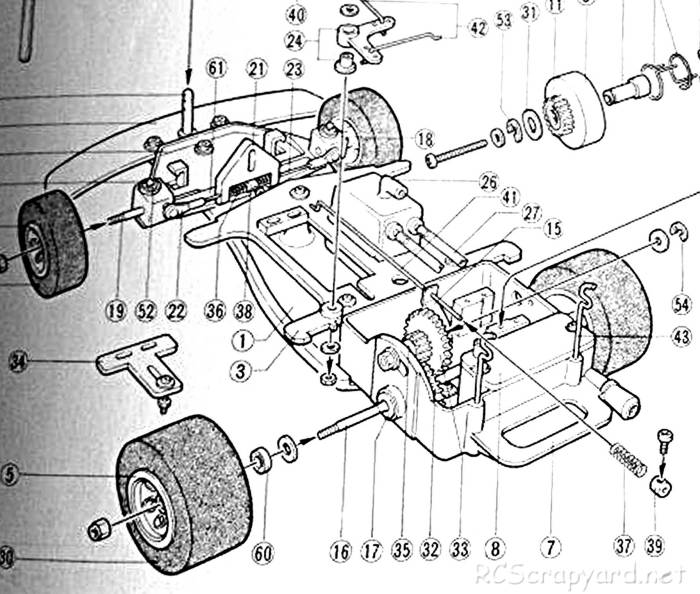
★ Kyosho Minitz 06 Engine ★
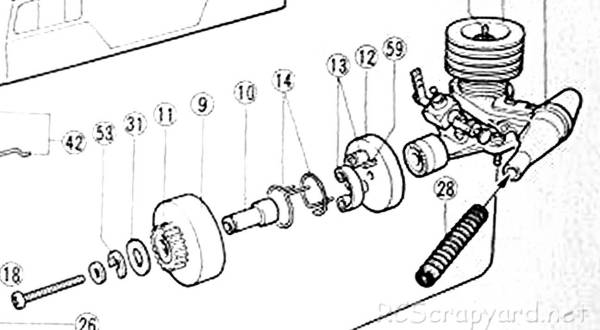
|
Buying a Used Radio Controlled Model
|
|
Manufacturers and Brands Catalogued, Listed and Reviewed by RC-Scrapyard.
At present, the RC Model Manufacturers, Brands and Distributors covered by us are: ABC Hobby, Academy, Acme Racing, Agama Racing, Amewi, Ansmann Racing, ARRMA, Team Associated, Atomic RC, Axial, AYK, Bolink, BSD Racing, Capricorn, Carisma, Carson, Caster Racing, Cen, Corally, Custom Works, Durango, Duratrax, ECX - Electrix, Exceed RC, FG Modellsport, FS-Racing, FTX, Fujimi, Gmade, GS-Racing, Harm, HBX, Helion, Heng Long, Himoto Racing, Hirobo, Hitari, Hobao, Hong-Nor, Hot Bodies, HPI, HSP, Intech, Integy, Jamara, JQ Products, Kawada, Kyosho, Losi, LRP, Maisto, Mardave, Marui, Maverick, MCD Racing, Megatech, Mugen, New Bright, Nichimo, Nikko, Nkok, Ofna, Pro-Pulse, Protech, PTI, RC4WD, Redcat Racing, RJ-Speed, Robitronic, Schumacher, Seben, Serpent, Smartech, Sportwerks, Step-Up, Tamiya, Team-C Racing, Team Magic, Thunder Tiger, Tomy, Top Racing, Traxxas, Trinity, Tyco, Vaterra RC, Venom, VRX Racing, WLToys, X-Factory, Xmods, Xpress, Xray, XTM, Yankee RC, Yokomo, ZD Racing and Zipzaps. |
|
Hints, Tips and Information
Driving On Road
The basic driving style most commonly used for all forms of on road, tarmac and carpet racing, involves using the full width of the road available, and cutting each apex as tight as possible, whilst keeping complete control of the car on the track. The style, often referred to as "Rounding" looks quite simple to those watching, but to get it right needs good hand eye coordination and lots of practice. |
|
Hints, Tips and Information
Shock Mount Settings
The combinations of Shock settings available on the majority of on and off road cars are far too many for this article to cover, so I will endeavour to explain some of the basics, that should give you some idea what these changes might achieve. Some of the settings suggested may not be available on all RC model cars. |
|
RC Models:
|
Radio & Motors: |
Other
Accessories: |